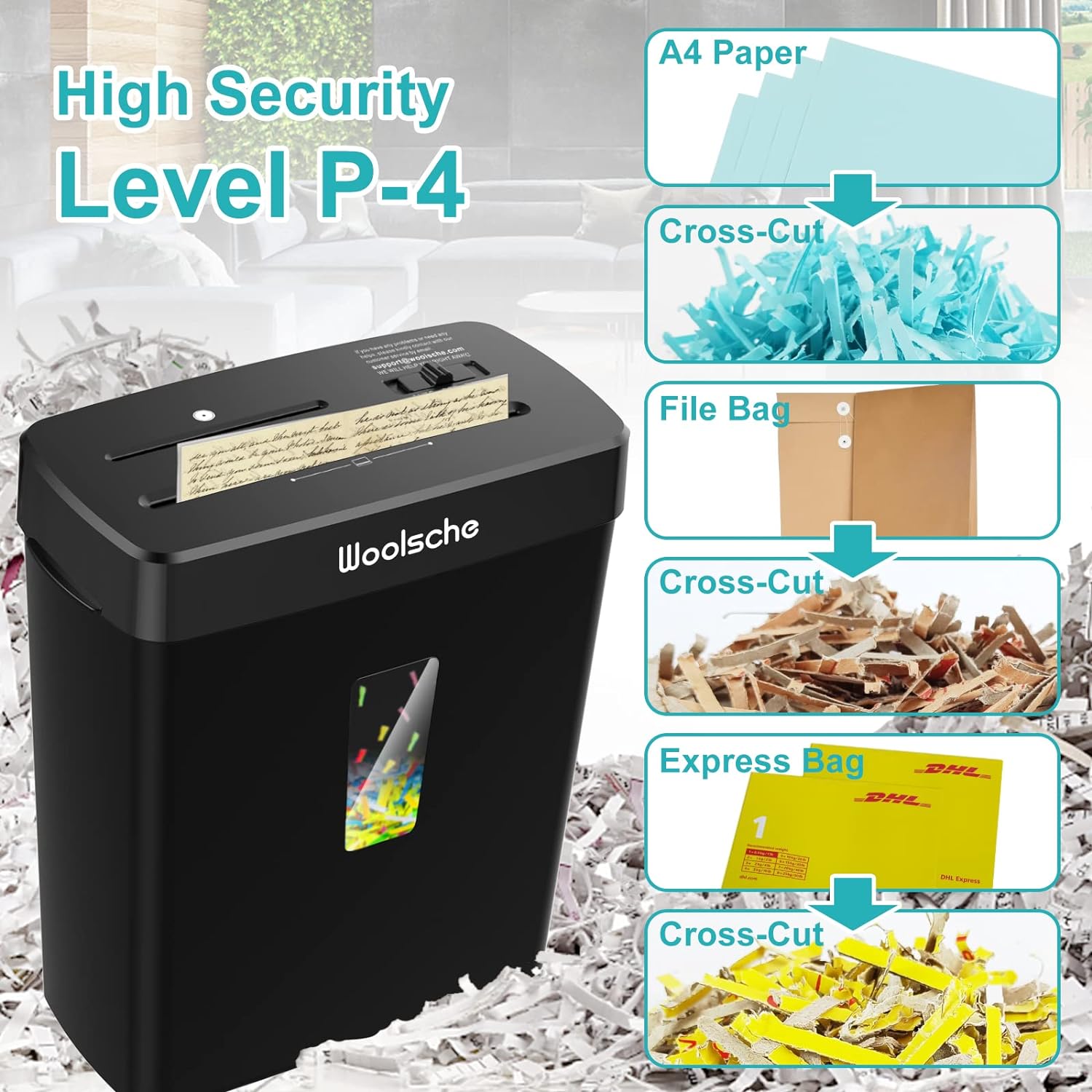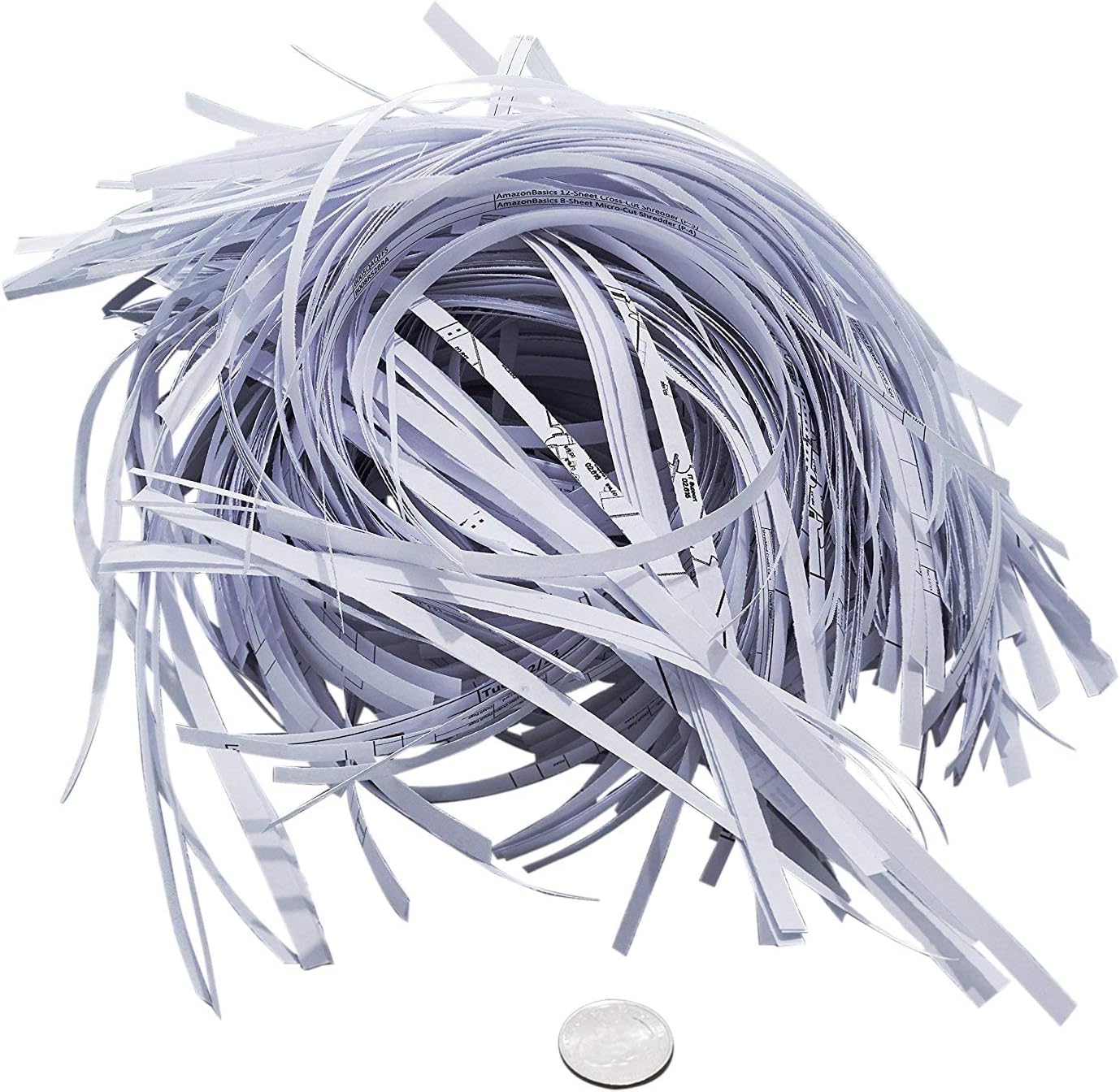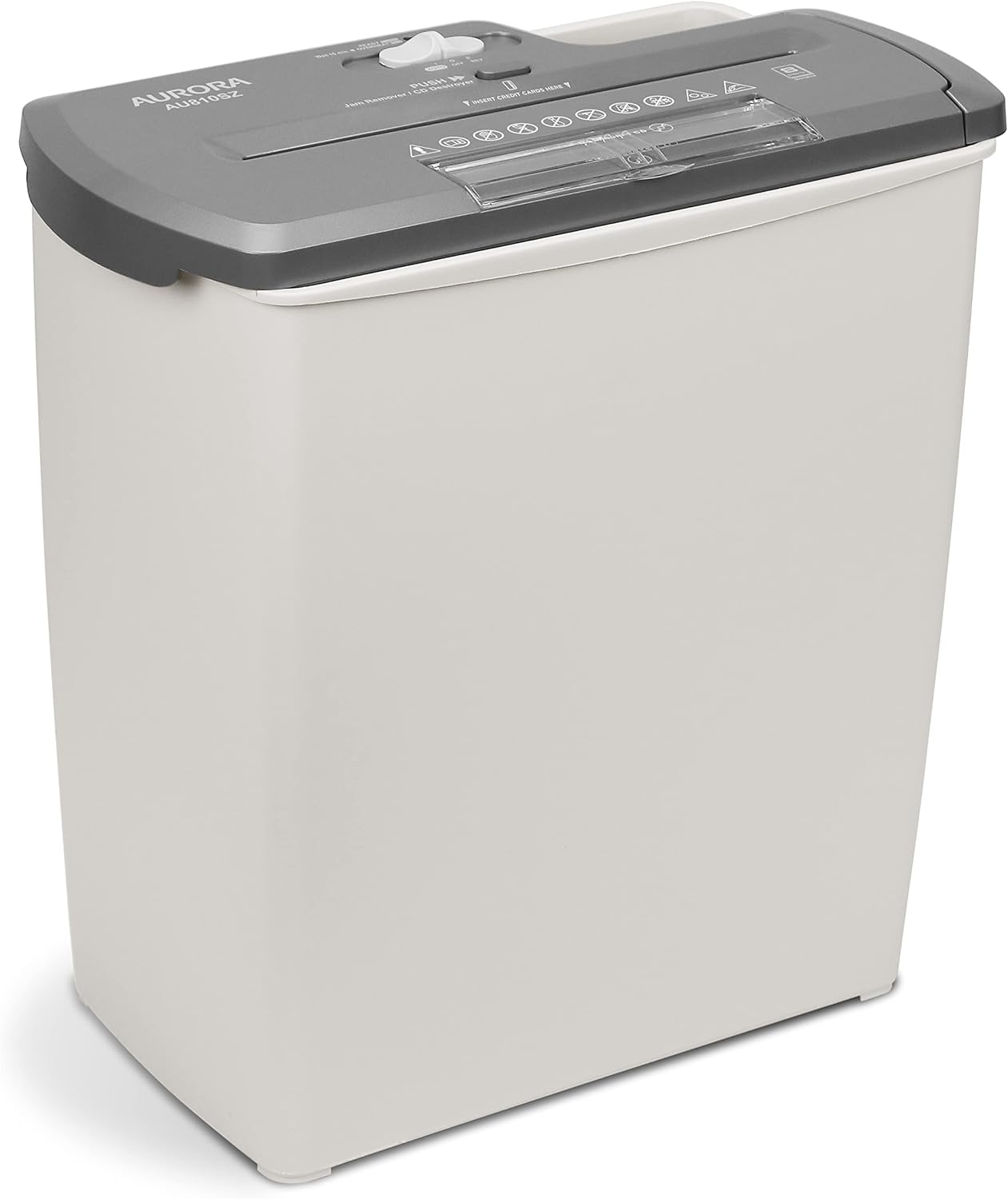When it comes to purchasing a paper shredder, there are a few key factors to consider. First and foremost, determine the shredding capacity and whether it aligns with your needs. Consider the type of documents you plan to shred and choose a shredder that can handle them efficiently. In addition, don’t overlook the shredding speed and whether it meets your requirements. Other important factors include the size of the shredder, its safety features, and the noise level it produces. By keeping these points in mind, you can make a confident and informed decision when buying a paper shredder.

Type of Shredder
Strip-Cut Shredders
Strip-cut shredders are the most basic type of shredder available in the market. They work by cutting paper into long, thin strips. While these machines are affordable and can shred large amounts of paper quickly, they offer the lowest level of security. Strip-cut shredders are suitable for shredding non-sensitive documents that do not contain confidential information.
Cross-Cut Shredders
Cross-cut shredders are more advanced than strip-cut shredders as they provide a higher level of security. These machines shred papers in both vertical and horizontal directions, creating small confetti-like pieces. Cross-cut shredders are capable of shredding sensitive documents such as financial statements and personal information, making it harder for anyone to piece the shredded documents back together.
Micro-Cut Shredders
If you require the highest level of security for your confidential documents, micro-cut shredders are the way to go. These shredders use advanced technology to slice papers into tiny particles, making it almost impossible to reconstruct them. Micro-cut shredders are commonly used by businesses and organizations that handle highly sensitive information or those who prioritize utmost data protection.
Shredding Capacity
Sheet Capacity
When considering the shredding capacity, it is important to think about how many sheets of paper the shredder can handle at once. The sheet capacity is typically listed on the product specifications and refers to the maximum number of sheets that can be fed into the shredder’s throat in a single pass. It’s essential to choose a shredder with a sheet capacity that meets your needs to ensure efficient and smooth shredding operations.
Continuous Run Time
The continuous run time refers to the duration the shredder can operate before it needs to cool down. Some shredders can only run for a few minutes before needing a break, while others are designed for continuous use without the need for cooling down. If you have a high volume of shredding needs, opting for a shredder with a longer continuous run time will save you time and prevent any interruptions during shredding sessions.
Cool Down Time
After running for its maximum continuous run time, shredders often require a cool-down period to prevent overheating. During this period, the shredder’s motor cools down to avoid any potential damage from prolonged use. The cool-down time varies depending on the shredder’s design and motor power. Be sure to check the cool-down time of a shredder to ensure it aligns with your needs, especially if you have heavy-duty shredding requirements.

Security Level
P-2 and P-3 Security Levels
Shredders with security levels of P-2 and P-3 are suitable for shredding general documents that do not contain highly sensitive information. These security levels provide a moderate level of security by cutting paper into larger confetti-like pieces. They are an ideal choice for personal use or for disposing of non-confidential documents in a household or small office.
P-4 and P-5 Security Levels
For documents that contain more sensitive information, such as financial records or legal papers, shredders with security levels P-4 and P-5 offer a higher level of protection. These shredders produce smaller particles, rendering it significantly more challenging for someone to reconstruct the shredded documents.
P-6 and P-7 Security Levels
Shredders with security levels P-6 and P-7 provide the highest level of security available in the market. They are designed for organizations or individuals handling highly confidential information, such as government agencies or financial institutions. With their micro-cut technology, these shredders turn documents into minuscule particles, ensuring the utmost protection against unauthorized access.
Speed and Motor Power
Feet per Minute (FPM)
The speed of a shredder is measured in feet per minute (FPM) and indicates how quickly the machine can shred documents. Higher FPM values mean faster shredding times, which can be beneficial for individuals or businesses with large volumes of documents to shred. However, it’s essential to strike a balance between speed and safety, as faster shredding may compromise the thickness of the paper being shredded.
Horsepower (HP)
The motor power of a shredder is measured in horsepower (HP) and determines the machine’s ability to handle heavy-duty shredding tasks. Higher HP values indicate a more powerful motor, capable of shredding thicker or more robust materials such as credit cards or CDs. Consider your specific shredding needs to determine the appropriate horsepower for your intended usage.

Feed Type
Manual Feed
Shredders with manual feed require the user to manually insert each sheet of paper into the shredder’s throat. While manual feed shredders offer more control over the shredding process, they can be time-consuming, especially when dealing with significant volumes of documents. These shredders are often preferred for occasional or light shredding needs.
Auto Feed
Auto feed shredders, on the other hand, provide a more convenient and time-saving solution. These shredders have a tray where you can stack a considerable number of documents, eliminating the need for constant monitoring and feeding. The shredder automatically pulls in the documents, shreds them, and continues the process until the stack is complete. Auto feed shredders are ideal for users who have large amounts of paper to shred on a regular basis.
Bin Capacity
Size of the Bin
The bin capacity refers to the volume of shredded paper that the shredder’s waste bin can hold. When choosing a shredder, consider the frequency and volume of your shredding needs. A larger bin capacity will reduce the frequency with which you need to empty the bin, saving time and effort. However, it is important to balance the bin capacity with the overall size and portability of the shredder.
Ease of Emptying
While the bin capacity is essential, equally important is the ease of emptying the shredded paper. Look for shredders with user-friendly bin designs that allow for effortless removal of the shredded waste. Some shredders have pull-out bins or bins with handles, making it easier to carry and dispose of the shredded paper without creating a mess.

Safety Features
Safety Lock
A safety lock feature ensures that the shredder remains inoperable when not in use. This feature prevents accidental shredding and protects children or pets from potential injuries. Having a safety lock gives you peace of mind, knowing that your shredder is secure and cannot be operated by unauthorized individuals.
Overload Protection
Overload protection is a safety feature that prevents the shredder’s motor from burning out due to excessive use. When the shredder detects an overload, it automatically shuts off, allowing the motor to cool down and prevent any potential damage. This feature not only safeguards the shredder but also extends its overall lifespan.
Auto Reverse
Sometimes, paper jams can occur while shredding. Shredders equipped with an auto reverse feature automatically reverse the shredding process when a jam is detected, clearing the jammed paper and preventing further damage to the machine. This feature eliminates the need for manual intervention, saving time and frustration.
Noise Level
The noise level of a shredder is measured in decibels (dB). Shredders with lower dB ratings produce less noise, which can be important, especially in office environments or shared spaces where noise might be disruptive. Consider your surroundings and choose a shredder that operates at a noise level comfortable for you and those around you.
Size and Portability
Dimensions
When considering the size of a shredder, think about the available space in your home or office. Shredders come in various dimensions, so it’s essential to check the product specifications to ensure it fits comfortably in your desired location. Additionally, consider the size of the throat, as it determines the maximum width of paper that can be fed into the shredder.
Weight
The weight of a shredder can affect its portability and ease of movement. Lighter shredders are easier to transport or relocate, which can be beneficial if you require shredding in different areas of your home or office. However, if you prioritize stability and sturdiness, heavier shredders are generally more durable and less likely to shift or tip over during use.
Additional Features
Jam-Proof Technology
Shredders equipped with jam-proof technology are designed to minimize or eliminate paper jams. These machines are equipped with sensors that detect potential jams and adjust the shredding process accordingly. Jam-proof technology ensures smooth operation and prevents time-consuming interruptions caused by paper jams.
Energy Efficiency
Many shredders are now designed with energy-saving features, such as automatic sleep mode or power-saving technology. These features help reduce energy consumption when the shredder is not in active use, contributing to overall energy efficiency and lower electricity bills. Consider selecting a shredder with energy-saving features to minimize environmental impact and save on energy costs.
Warranty
Before purchasing a shredder, it’s important to check the warranty provided by the manufacturer. A warranty offers protection in case of any defects or malfunctions, providing peace of mind and assurance of the product’s quality. Opt for a shredder with a longer warranty period to ensure long-term satisfaction and support in case any issues arise.
In conclusion, when buying a paper shredder, there are several factors to consider. Start by determining the type of shredder that best suits your needs, whether it be strip-cut, cross-cut, or micro-cut. Next, assess the shredding capacity, security level, speed, and motor power based on the volume and sensitivity of the documents you intend to shred. Think about the feed type, bin capacity, and ease of emptying for convenience and efficiency. Safety features, noise level, size, and portability are also crucial aspects to evaluate. Lastly, additional features such as jam-proof technology, energy efficiency, and warranty can further enhance the overall shredding experience. By considering these factors, you can make an informed decision and choose the perfect paper shredder that meets your specific requirements.



